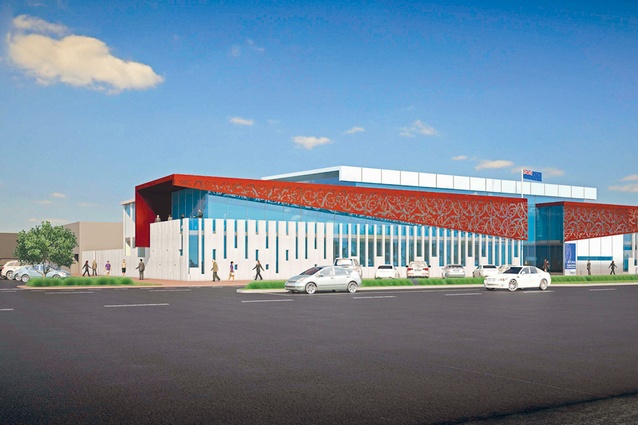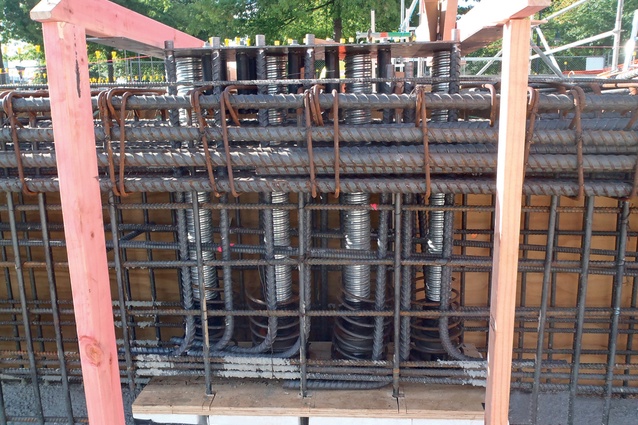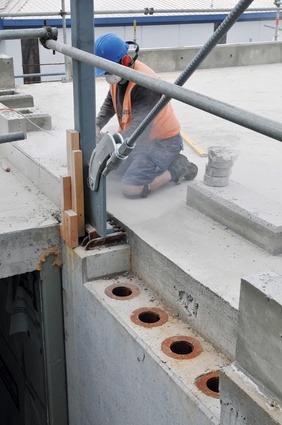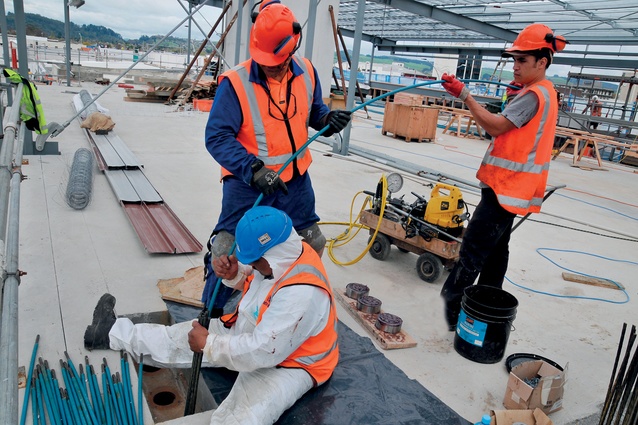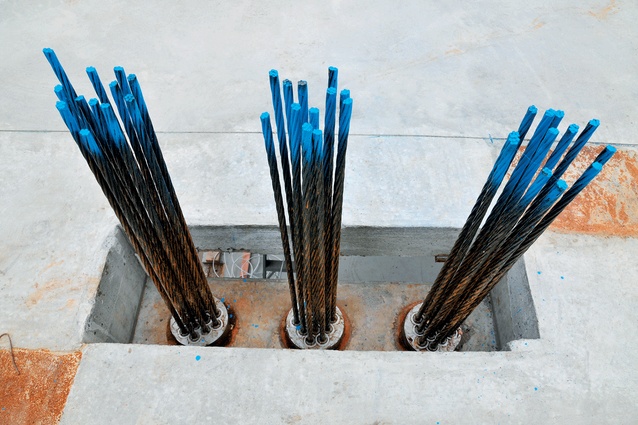Locked in
The new police headquarters in Rotorua merges culture and innovation, and develops the application of PRESSS technology.
One of just a handful of New Zealand buildings to utilise PRESSS technology, the new Bay of Plenty police headquarters and station in Rotorua is also the first custom-designed building for police use in the country. And it’s pushing the boundaries of PRESSS application, utilising a unique system in which the tensioned cables are greased and sheathed in plastic, as well as incorporating significant detailing around the staircases, which are designed in such a way that during a seismic event the pre-cast stairs have the ability to move along with the PRESSS walls and stay in location.
Construction of the multi-million dollar police station and headquarters is well underway, with the 14-month build scheduled for completion in mid-April 2014. The dynamic facility, located on Fenton Street, one of Rotorua’s busiest, is set to become somewhat of a local icon, with a marae-inspired façade carved by local Te Arawa artist Lyonel Grant. Leuschke Group architect Colin Leuschke said while the initial concept for the façade was developed as part of the overall design, it was handed over to Mr Grant who created a traditional pattern. “From the outset, we knew this building needed to connect with the city, to be unique to Rotorua, and to have a strong local influence,” Mr Leuschke said.
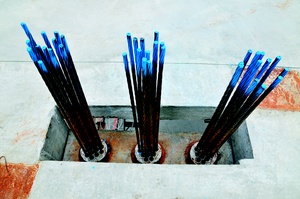 “Rotorua is a window into Maori culture, and this needed to be understood and respected. The building’s diminutive entry is similar to those seen on marae, where the door is small and human, and the entry takes you in as a person. At sketch level we indicated laser cutting of a traditional Maori pattern. Lyonel Grant’s role was to design an original Te Arawa pattern on this screen as an individual piece of art, which we then incorporated into the technology of how it was constructed and integrated into the physical building,” he said.
“Rotorua is a window into Maori culture, and this needed to be understood and respected. The building’s diminutive entry is similar to those seen on marae, where the door is small and human, and the entry takes you in as a person. At sketch level we indicated laser cutting of a traditional Maori pattern. Lyonel Grant’s role was to design an original Te Arawa pattern on this screen as an individual piece of art, which we then incorporated into the technology of how it was constructed and integrated into the physical building,” he said.
The digitised image of the screen’s design will be loaded into a laser-cutting machine and cut off-site. The 1700m2, three-storey facility will link into existing custodial facilities and, as well as housing police services for the area, will act as a community hub for Rotorua. Following completion of the current project, additional facilities for information technology staff will be constructed. The facility utilises 37 post-tensioned PRESSS panels, 12 of which are two storeys high. Canam Construction project manager Roy Lehndorf said despite a relatively smooth build thus far, the job had not been without its challenges.
“In order to give the successful contractor a head start, the client had already done excavations so we were more than two metres below street level,” Mr Lehndorf said. “ We had to build a significant foundation to get ourselves up to ground level, which required the use of some huge members of reinforcing steel – about 100 tonnes of reinforcing steel went into the foundations, and around 900m3 of concrete. Because it is an Importance Level 4 building, the ratio of reinforcing to structural steel is extremely high. There is in the order of 130 tonnes of reinforcing steel in the entire structure, and around 200 tonnes of structural steel.”
The PRESSS system starts from the foundations, in which specifically designed ductile joints link through to the shear wall panels by tensioned cables that run through ducts and are fixed to the head of the panels. An external dissipater plate is placed at the base of each panel and is bolted on at the end of the process, after the cables are tensioned. In a seismic event, as the panels move, the tensioned cables straighten them back to their original position, without damaging beams or columns. The dissipater plates are designed to absorb the energy produced by a seismic event and contain any damage to these components alone, which allows a quick and relatively simple check and repair.
“The methodology was to have ducts cast right from the bottom of the foundations through to the top of the panels, and the strands of post-tensioned wire threaded through the ducts,” Mr Lehndorf said. “There was little or no tolerance to work with between the three elements; the foundations, plates and panels. We spent a lot of time ensuring there were no errors in this process, by making templates to help align the components. We built jigs/templates in pairs , one set we used on site to assist the casting of the components and the matching set was sent off site to the pre-cast factory to assist with the casting and alignment of the ducts. This meant everything connected and aligned as it should and there were no issues despite the limited tolerances we had to work with.”
Mr Lehndorf said in order to protect the stands from corrosion it was general practice to pump grease through the duct voids. “We were concerned that using this method we may face issues in the future. Say for instance, if we had some minor differential settlement within the building, given some panels were separated between levels, our concern was that the grease may leak out, let alone the potential mess it would create after an earthquake. This, along with grease filling being a very slow process, we thought there must be a better way. So between us and the subcontractor, BBR Contech, we came up with an alternative method of protecting the strands, which was far simpler. It involved importing a greased and sheathed strand - the steel strand was effectively sheathed in HDPE plastic that had a grease element in it. The plastic outer combined with the grease inner provided the necessary protection of the strands.
“Hopefully this might change the current thinking in regards to grease-filled ducts, so in the future alternative methods such as this can be utilised. Using this method also meant we were able to provide the client with a cost saving.” Spiire structural engineer Wilhelm Wolfaardt said while knowledge gained from previous research and experience was used, the project provided the opportunity to develop PRESSS technology further. “The methodology that was adopted was to use single shear walls and double shear walls next to each other, which work independently of one another. We had to allow movement between the walls and slabs, which required very specific detailing,” Mr Wolfaardt said.

